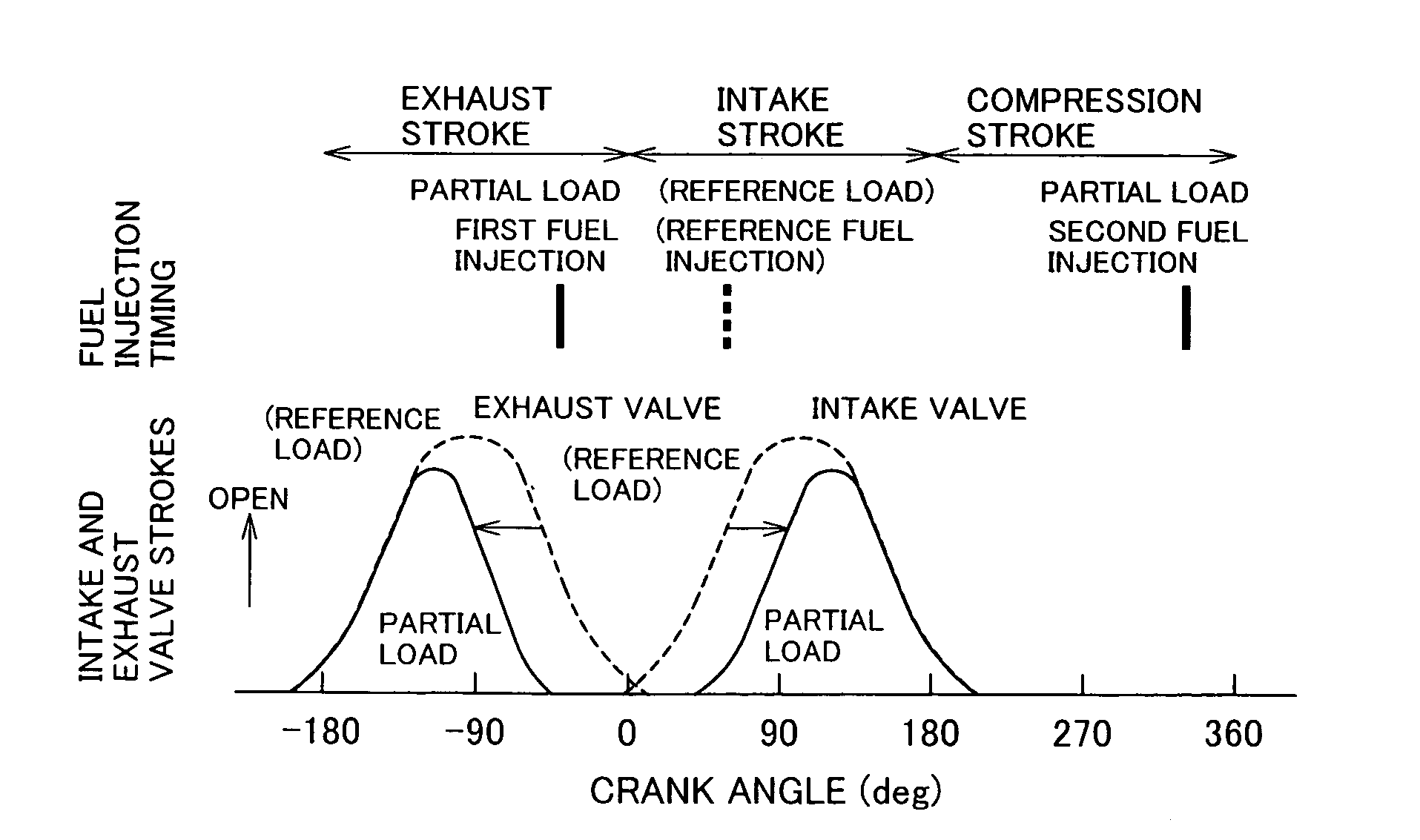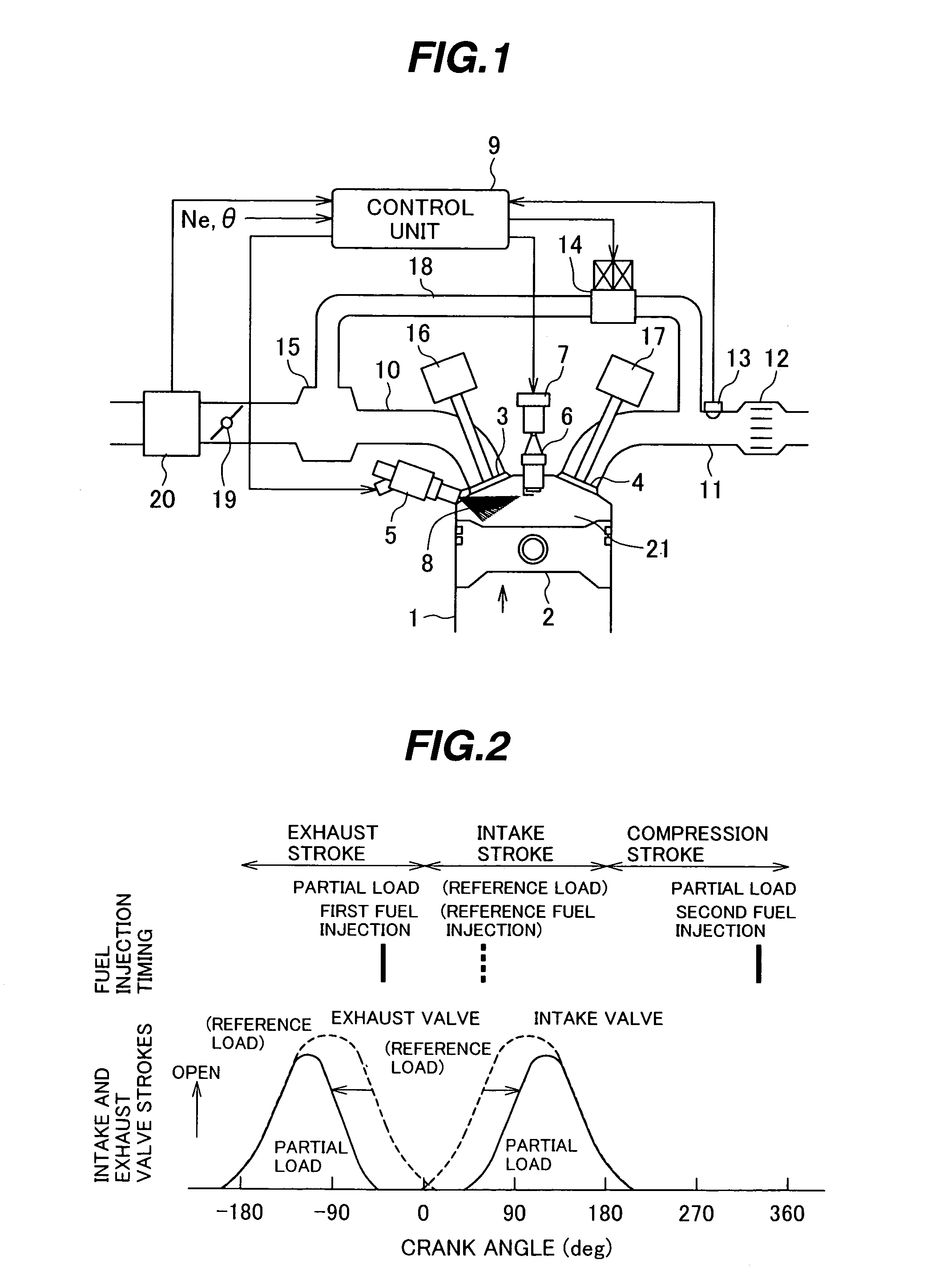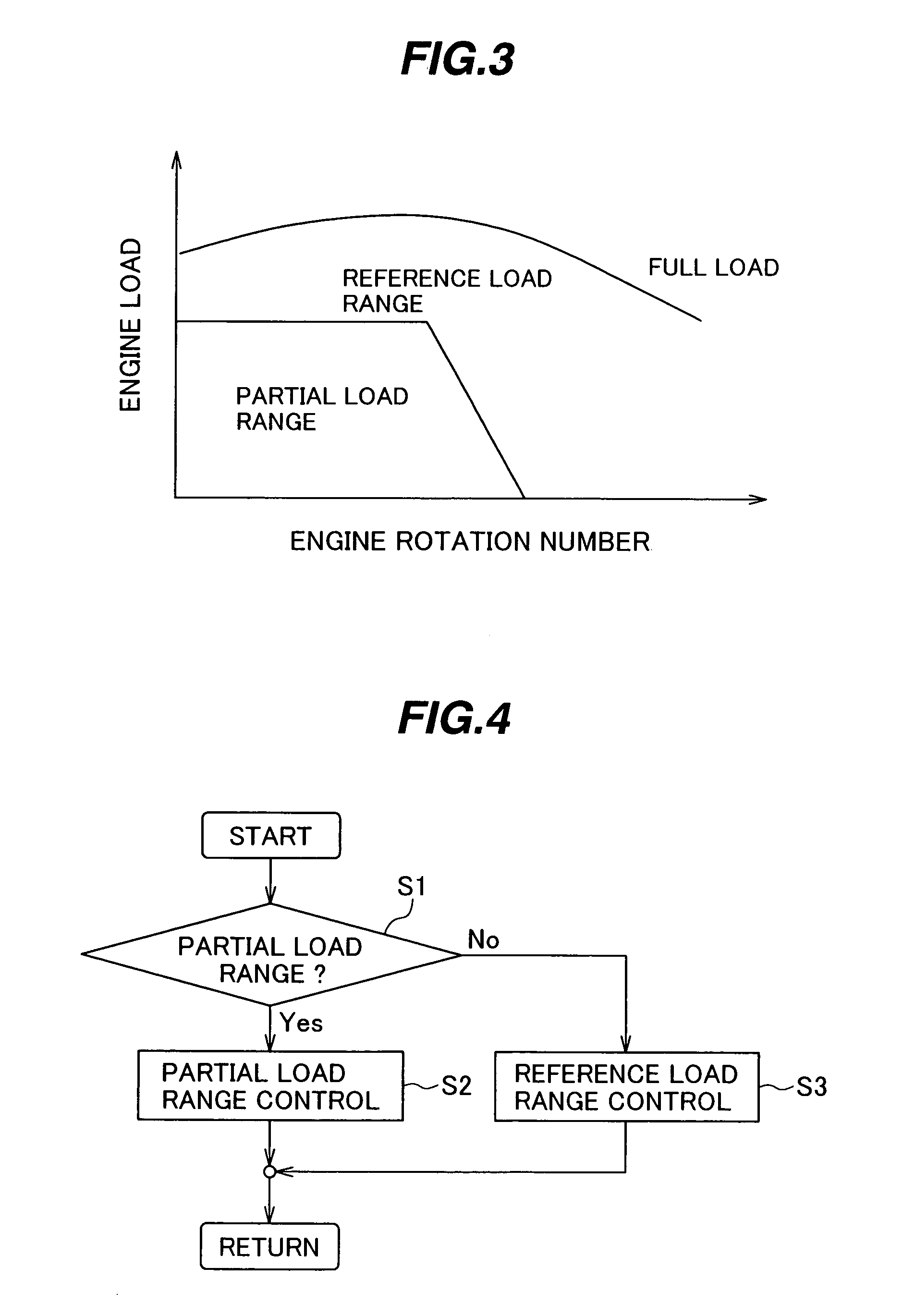Control device and control method for direct injection engine
a control device and direct injection technology, which is applied in the direction of electric control, ignition automatic control, machines/engines, etc., can solve the problems of difficult removal of nox, limited amount of fuel that can be injected in the exhaust stroke, and inability to use three-way catalysts, etc., to achieve sufficient vaporization and radicalization of fuel, increase combustion stability, and promote vaporization and radicalization
- Summary
- Abstract
- Description
- Claims
- Application Information
AI Technical Summary
Benefits of technology
Problems solved by technology
Method used
Image
Examples
first embodiment
[0050]FIG. 2 shows a valve opening / closing mode (opening and closing timings and lift amount) of each of the intake valve 3 and the exhaust valve 4, and a fuel injection mode (number of injection times and fuel injection timing) provided by the fuel injection valve 5, wherein the engine is operating in the reference load range and the partial load range, and wherein, as described in the aforesaid item (A), as the valve control devices 16 and 17, ones by which the valve opening timing and the valve lift amount of the intake valve 3, and the valve closing timing and the valve lift amount of the exhaust valve 4 are made variable, are employed.
[0051]In FIG. 2, the lateral axis indicates the crank angle that is 0 degree at the top dead center position in the exhaust stroke, and the longitudinal axis indicates the stroke (lift amount) of each of the intake valve 3 and the exhaust valve 4. Here, the valve opening / closing mode and the fuel injection timing under the condition that the engi...
third embodiment
[0070] shown in FIG. 7, when the fuel injection quantity calculated based on operating conditions of the engine 1 is more than three times the minimum controllable quantity of the fuel injection valve 5, the fuel injection is performed by dividing it into three-time injections. When performing injections three times, the first-time, second-time, and third-time injections, respectively, are performed in the latter half of the exhaust stroke, the first half of the intake stroke, and the latter half of the compression stroke. With this arrangement, the effect produced by early closing the exhaust valve 4 to cause exhaust gases to remain (internal EGR) as described above, and the homogenization of air-fuel mixture can be simultaneously achieved. More specifically, in this case, not only the air-fuel mixture in the overall cylinder can be made more uniform, but also the air-fuel mixture in the vicinity of the ignition plug 6 can be made a little richer, and therefore, even though a large...
fourth embodiment
[0072]FIG. 9 shows a valve opening / closing mode (opening and closing timings) of each of the intake valve 3 and the exhaust valve 4, and a fuel injection mode (number of injection times and fuel injection timing) provided by the fuel injection valve 5, wherein the engine is operating in the reference load range and the partial load range, and wherein, as described in the aforesaid item (B), as the valve control devices 16 and 17, the ones (valve timing control mechanisms (VTCs)) by which the opening timing and the closing time of each of the intake valve and the exhaust valve are made simultaneously shiftable, are employed. In this embodiment, under the partial load condition, the opening and closing timings of the exhaust valve 4 are moved toward the advance angle side (i.e., are advanced) by approximately 45 degrees relative to the case under the reference load condition, and simultaneously, the opening and closing timings of the intake valve 3 are moved toward the retard angle s...
PUM
 Login to View More
Login to View More Abstract
Description
Claims
Application Information
 Login to View More
Login to View More - R&D
- Intellectual Property
- Life Sciences
- Materials
- Tech Scout
- Unparalleled Data Quality
- Higher Quality Content
- 60% Fewer Hallucinations
Browse by: Latest US Patents, China's latest patents, Technical Efficacy Thesaurus, Application Domain, Technology Topic, Popular Technical Reports.
© 2025 PatSnap. All rights reserved.Legal|Privacy policy|Modern Slavery Act Transparency Statement|Sitemap|About US| Contact US: help@patsnap.com



